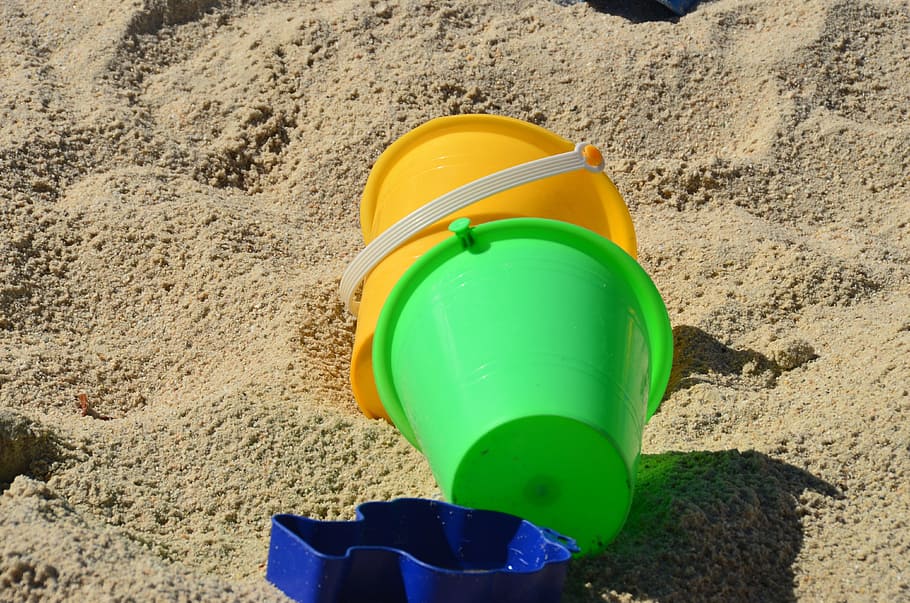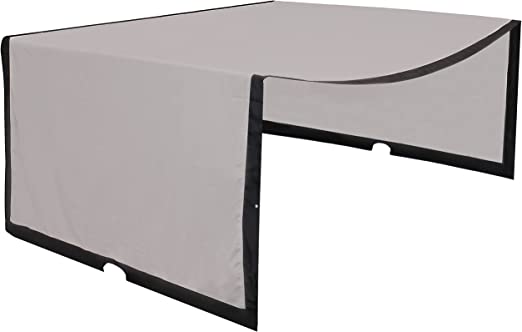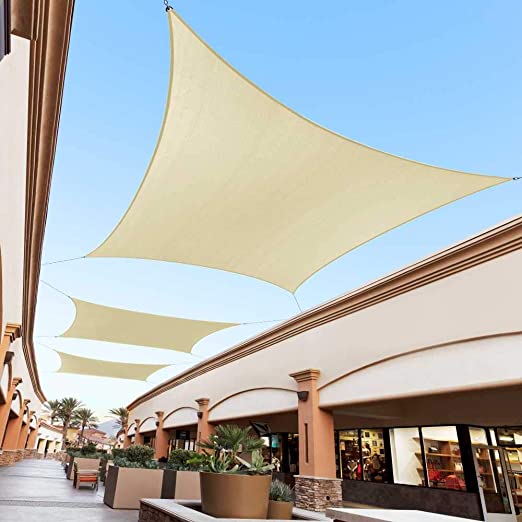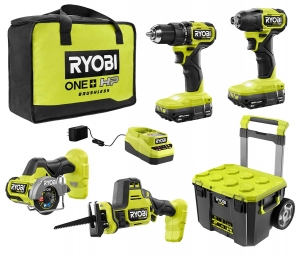How To Add Shade To A Sandbox

Stay Cool and Keep Playing: Creative Sandbox Shade Ideas for Kids
Playing in the sandbox is one of my most cherished childhood memories. But as much fun as it is, being out in the sun for prolonged periods can be damaging to young skin. That's why it's important to provide a shaded area for kids to play and enjoy themselves without worrying about the sun’s harmful UV rays.
There are several ways you can add shade to a sandbox to provide a more comfortable play experience for children during hot and sunny days. In this blog, I’ll cover what factors you should consider before selecting a shade option, and also give you some DIY ideas on how to create your own sandbox shade using simple materials like PVC pipes.
 Why is shade important for sandboxes?
Why is shade important for sandboxes?
When it comes to providing a safe and comfortable play environment for kids, shade is an important consideration for sandboxes. Not only does shade help to protect kids from harmful UV rays and reduce the risk of sunburn and heat exhaustion, but it can also keep the sand cooler and more comfortable for play.
Umbrellas and/or canopies are great for providing shade for a sandbox. These options are easy to set up and can be adjusted as needed. Another option is natural shade from trees or shrubs – if the location of your sandbox allows for that. This can also create a more natural play environment while still providing protection from the sun.
Whether it’s an umbrella, a DIY Canopy, or a shrub, adding shade to a sandbox is a part of creating a safe and enjoyable play experience for kids.
Factors to consider before selecting a sandbox shade
Before selecting a sandbox shade for your kids, it's important to consider several factors that will determine the shade's effectiveness and suitability.
The size of the shade is crucial as it should be large enough to cover the entire sandbox and provide sufficient shade for children while they play.
Also, consider choosing a UV-resistant fabric that can help protect against harmful sun rays while still allowing for air circulation. It's important to choose materials that are durable and weather-resistant.
DIY Sandbox Shade Ideas
 Of course, using an umbrella or beach tent is an option, but if you’re looking for a more custom solution, you can create a unique frame using PVC pipes. Once the frame is in place, you can attach sails or a canopy to create a stylish and functional shade structure. With just a little bit of creativity and effort, you can have a shaded play area for your kids that they'll enjoy for hours on end.
Of course, using an umbrella or beach tent is an option, but if you’re looking for a more custom solution, you can create a unique frame using PVC pipes. Once the frame is in place, you can attach sails or a canopy to create a stylish and functional shade structure. With just a little bit of creativity and effort, you can have a shaded play area for your kids that they'll enjoy for hours on end.
A Canopy Shade for Sandboxes
One great way to keep kids cool and safe while playing in a sandbox is by installing a canopy shade. These shades are available in a variety of colors, sizes, and materials, making it easy to find one that fits your particular sandbox. Canopy shades can be easily installed using poles or sturdy frames and provide ample shade to kids while they play. More on that below.
Not only do these shades help protect kids from harmful UV rays, but they also add a fun element to the sandbox. With their vibrant colors and playful designs, canopy shades make sandboxes look more inviting and appealing to children. Whether you're looking for a practical solution to keep your kids safe or simply want to add some extra flair to your backyard play area, a canopy shade is an excellent option for any sandbox.
 A Sail Shade for Sandboxes
A Sail Shade for Sandboxes
Another creative way to provide shade for your kids' sandbox is by using a sail shade. They come in a variety of colors and sizes, so you can easily find one that matches your outdoor space. Installing a sail shade is similar to a canopy shade, needing a few basic items.
Build Your Own Sandbox Shade with PVC Pipes
Once you’ve decided whether you will use a canopy or sail, you can build your own base using PVC pipes. This DIY project is affordable and easy, requiring only PVC pipes, connectors, and shade cloth. The shade cloth can be easily attached to the PVC frame using zip ties or rope.
To start, measure your sandbox and the height that you want your covering to reach. With those dimensions, you’ll want PVC pipes and fittings that will make a rectangular shape over your sandbox. Essentially you are creating a roof for the top of the sandbox. Just like any roof, you’ll want a slight slope to prevent rain from pooling at the top. So, when you take your measurements, take this into account. For the vertical PVC pipes, factor in going into the ground at least 2 feet. Then using zip ties or rope, you can attach the canopy or sail to the top portion.
If you want an even simpler solution, you can buy a PVC pipe, a pipe strap, and an umbrella. This solution attaches a PVC pipe to the sandbox’s frame, allowing it to be an umbrella base. Once the PVC pipe is fixed to the frame of the sandbox you can insert an umbrella of your choice for shade. When selecting the PVC pipe, you’ll want to make sure it is long enough to go into the ground by 2 feet and also have a diameter that will fit the pole of your umbrella. An optional step would be to drill a hole into the PVC so that you can use a C clamp to tighten the umbrella pole within the PVC pipe for extra hold. When you’re ready to begin, dig a hole with a post-hole digger near the outside edge of your sandbox. Put the PVC pipe into the hole at least 2 feet into the ground. Secure to the side of your sandbox with a U-shaped metal fitting. Insert your umbrella - and now you have shade!
Have A Fun And Safe Sandbox Experience.
Adding shade to your sandbox is an excellent way of ensuring your kids have a fun and safe playing experience. A DIY shade structure can help protect kids from the sun and keep them cooler and playing longer. For more tips on creating a fun and safe space for your kids, check out my project on how to put together a backyard playset. And if you’re looking for a more permanent structure for shade, consider building a pergola.
Recommended Articles

The How’s and Why’s of Upgrading a Central AC System
A step-by-step video demonstration showing removal and replacement of a central air conditioning system. Includes advantages of new, state-of the-art AC systems.

If You’ve Got a Project That Involves Demolition, You’ll Want to Know About This Tool.
I try out a new tool designed and engineered to do one task exceptionally well -- demolition.
